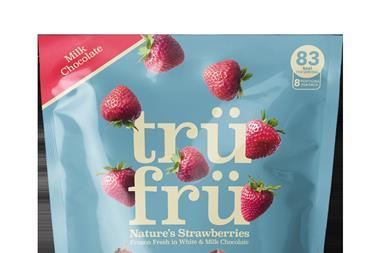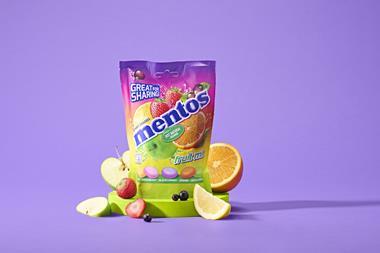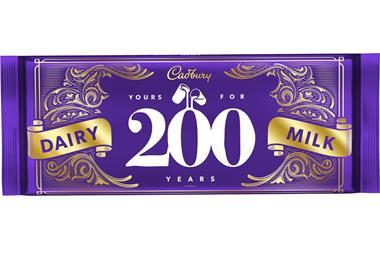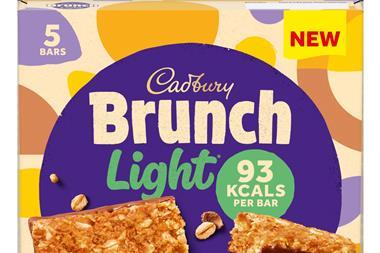Manufacturers are rising to the challenge of producing packaging that is sustainable and environmentally sound
There are a number of different factors influencing packaging design at the moment, but the two biggest drivers are sport and the environment.
With consumers more conscious than ever before of the need to stay well hydrated while taking part in physical activity, there has been a dramatic rise in the number of sports cap bottles entering the market, as well as new easy grip bottles for fast on the go consumption and no spillage.
Last year, Drench, the water brand from Britvic, introduced a new ergonomic bottle designed to fit comfortably in the hand while exercising, as did Welsh natural mineral water brand Brecon Carreg with its new One Litre Sports Cap bottle. Buxton also unveiled a new look in time for the summer with new easy-grip bottles.
However, reducing the impact of packaging on the environment looks set to be the biggest driver shaping design in the coming years, as manufacturers strive to produce ever lighter bottles and use a greater amount of recycled PET content in their packaging.
However, it's not an easy task. The UK has a poor record for recycling, with recent studies showing that only one plastic bottle in five is actually recycled. This means that the UK supply of recycled plastics for packaging is small, while demand is at an all time high.
As a result, some water manufacturers are looking to source recycled PET from abroad, while others are ditching the bottle completely and experimenting
with innovative and alternative packaging solutions.
One such company is UK-based Just Drinking Water, which produces Aqapax - water contained in a distinctive Tetra Pak carton. Neil Tomlinson, managing director of Just Drinking Water, says: "The market trend appears to lean towards a degree of recycled content and a 'green' message, which will inevitably alleviate a degree of consumer guilt in the category. However, making lighter PET bottles doesn't really get around the problem, as oil remains an unsustainable base resource, while thinner packaging exposes the product to transit damage and the package contents to potential contamination. Just Drinking Water perceives its pioneering use of the carton for Aquapax as a clear signal of how water packaging will evolve to in the future."
Rather than using straws, synonymous with ambient juice cartons, the packs use a re-sealable stream cap opener that enables consumers to easily pour the product into their mouths. "Our research highlighted that adults would rather sip water from a carton than use a straw," Tomlinson says.
Tetra Pak soft drinks category director Susan Frame added: "Cartons offer distinct advantages over plastic packages, particularly with functional and flavoured water. Carton package attributes are mainly linked to barrier protection against light and oxygen, which can help maintain the flavour and nutrients in value-added waters."
And then there are cans, which can carry bold visuals and are also easy to recycle. Perrier from Nestlé Waters has been successfully selling carbonated water in cans for years.
Another alternative packaging solution making waves in the water market is the pouch. There are huge logistical advantages to transporting pouches as opposed to rigid packaging. A single truck filled with flexible packages is the equivalent of up to 25 trucks of rigid, implying a dramatic reduction in carbon emissions. There are also clear storage advantages for retailers.
One company hoping to make a splash in the UK is Dolphin Water. It's innovative pouches, which are manufactured by SmartPack and distributed in the UK by GFT Retail, use 89% less plastic than a conventional water bottle, are 100% recyclable, and shrink down to a thin slip once drunk.
Dolphin Waters claim that their pouches will make "conventional packaging redundant". So watch this space.
There are a number of different factors influencing packaging design at the moment, but the two biggest drivers are sport and the environment.
With consumers more conscious than ever before of the need to stay well hydrated while taking part in physical activity, there has been a dramatic rise in the number of sports cap bottles entering the market, as well as new easy grip bottles for fast on the go consumption and no spillage.
Last year, Drench, the water brand from Britvic, introduced a new ergonomic bottle designed to fit comfortably in the hand while exercising, as did Welsh natural mineral water brand Brecon Carreg with its new One Litre Sports Cap bottle. Buxton also unveiled a new look in time for the summer with new easy-grip bottles.
However, reducing the impact of packaging on the environment looks set to be the biggest driver shaping design in the coming years, as manufacturers strive to produce ever lighter bottles and use a greater amount of recycled PET content in their packaging.
However, it's not an easy task. The UK has a poor record for recycling, with recent studies showing that only one plastic bottle in five is actually recycled. This means that the UK supply of recycled plastics for packaging is small, while demand is at an all time high.
As a result, some water manufacturers are looking to source recycled PET from abroad, while others are ditching the bottle completely and experimenting
with innovative and alternative packaging solutions.
One such company is UK-based Just Drinking Water, which produces Aqapax - water contained in a distinctive Tetra Pak carton. Neil Tomlinson, managing director of Just Drinking Water, says: "The market trend appears to lean towards a degree of recycled content and a 'green' message, which will inevitably alleviate a degree of consumer guilt in the category. However, making lighter PET bottles doesn't really get around the problem, as oil remains an unsustainable base resource, while thinner packaging exposes the product to transit damage and the package contents to potential contamination. Just Drinking Water perceives its pioneering use of the carton for Aquapax as a clear signal of how water packaging will evolve to in the future."
Rather than using straws, synonymous with ambient juice cartons, the packs use a re-sealable stream cap opener that enables consumers to easily pour the product into their mouths. "Our research highlighted that adults would rather sip water from a carton than use a straw," Tomlinson says.
Tetra Pak soft drinks category director Susan Frame added: "Cartons offer distinct advantages over plastic packages, particularly with functional and flavoured water. Carton package attributes are mainly linked to barrier protection against light and oxygen, which can help maintain the flavour and nutrients in value-added waters."
And then there are cans, which can carry bold visuals and are also easy to recycle. Perrier from Nestlé Waters has been successfully selling carbonated water in cans for years.
Another alternative packaging solution making waves in the water market is the pouch. There are huge logistical advantages to transporting pouches as opposed to rigid packaging. A single truck filled with flexible packages is the equivalent of up to 25 trucks of rigid, implying a dramatic reduction in carbon emissions. There are also clear storage advantages for retailers.
One company hoping to make a splash in the UK is Dolphin Water. It's innovative pouches, which are manufactured by SmartPack and distributed in the UK by GFT Retail, use 89% less plastic than a conventional water bottle, are 100% recyclable, and shrink down to a thin slip once drunk.
Dolphin Waters claim that their pouches will make "conventional packaging redundant". So watch this space.
























No comments yet